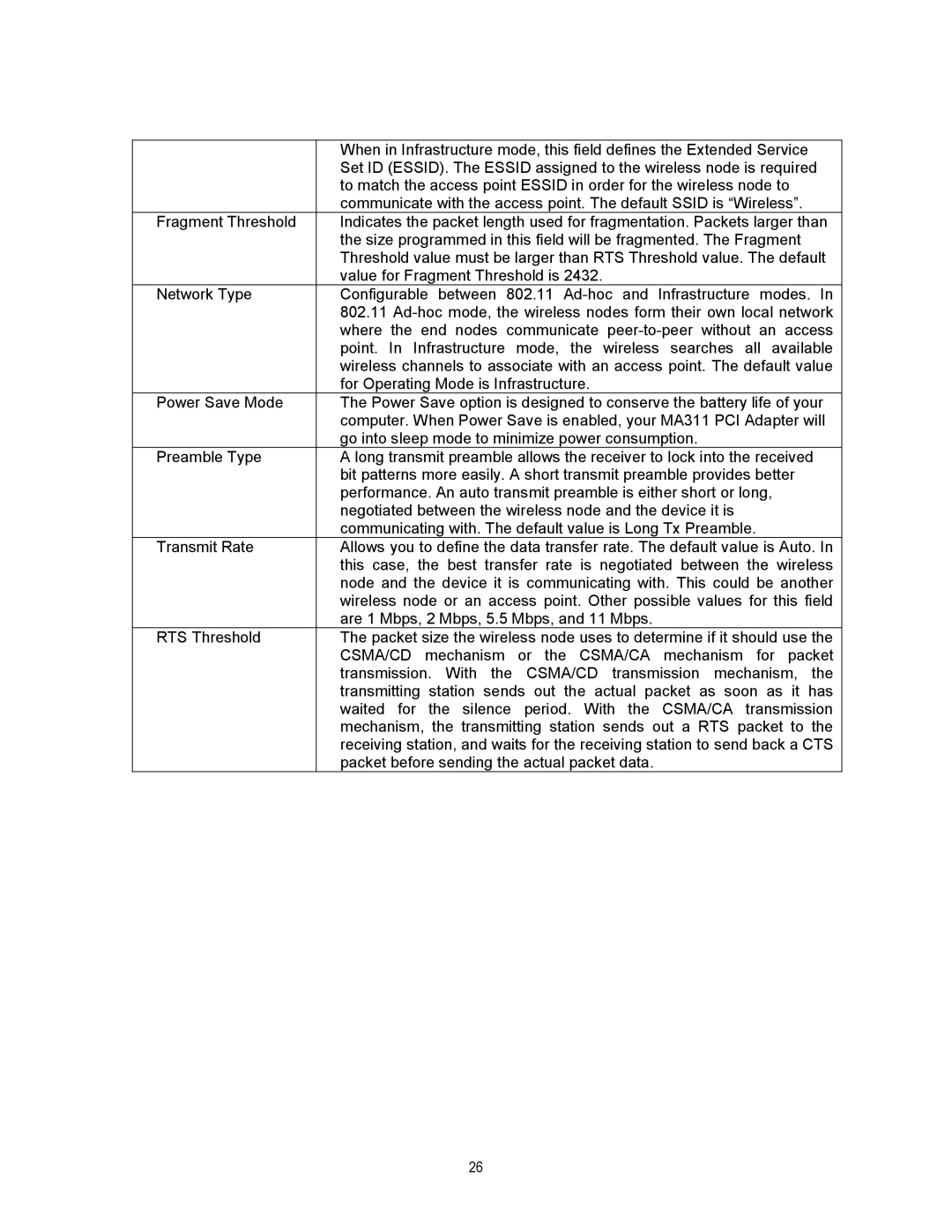| When in Infrastructure mode, this field defines the Extended Service |
| Set ID (ESSID). The ESSID assigned to the wireless node is required |
| to match the access point ESSID in order for the wireless node to |
| communicate with the access point. The default SSID is “Wireless”. |
Fragment Threshold | Indicates the packet length used for fragmentation. Packets larger than |
| the size programmed in this field will be fragmented. The Fragment |
| Threshold value must be larger than RTS Threshold value. The default |
| value for Fragment Threshold is 2432. |
Network Type | Configurable between 802.11 |
| 802.11 |
| where the end nodes communicate |
| point. In Infrastructure mode, the wireless searches all available |
| wireless channels to associate with an access point. The default value |
| for Operating Mode is Infrastructure. |
Power Save Mode | The Power Save option is designed to conserve the battery life of your |
| computer. When Power Save is enabled, your MA311 PCI Adapter will |
| go into sleep mode to minimize power consumption. |
Preamble Type | A long transmit preamble allows the receiver to lock into the received |
| bit patterns more easily. A short transmit preamble provides better |
| performance. An auto transmit preamble is either short or long, |
| negotiated between the wireless node and the device it is |
| communicating with. The default value is Long Tx Preamble. |
Transmit Rate | Allows you to define the data transfer rate. The default value is Auto. In |
| this case, the best transfer rate is negotiated between the wireless |
| node and the device it is communicating with. This could be another |
| wireless node or an access point. Other possible values for this field |
| are 1 Mbps, 2 Mbps, 5.5 Mbps, and 11 Mbps. |
RTS Threshold | The packet size the wireless node uses to determine if it should use the |
| CSMA/CD mechanism or the CSMA/CA mechanism for packet |
| transmission. With the CSMA/CD transmission mechanism, the |
| transmitting station sends out the actual packet as soon as it has |
| waited for the silence period. With the CSMA/CA transmission |
| mechanism, the transmitting station sends out a RTS packet to the |
| receiving station, and waits for the receiving station to send back a CTS |
| packet before sending the actual packet data. |
26
